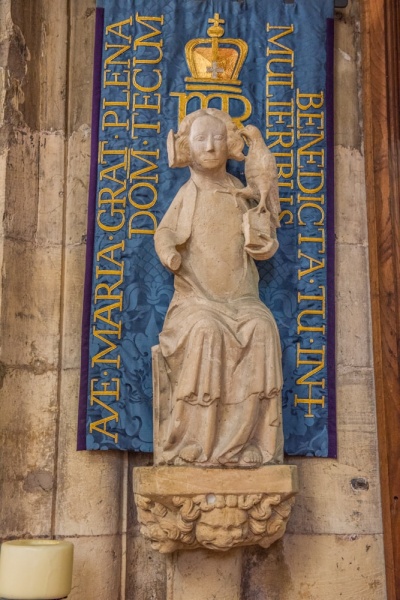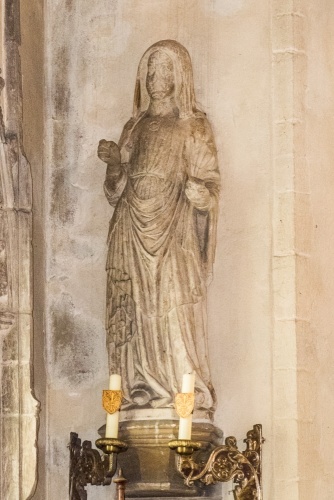Before the Marian pilgrimage departs the east midllands it seems appropriate to mention three syviving medieval statues of Our Lady that survive with specific links to individual churches.
The first is in Howden Minster in the East Riging of Yorkshire. Howden is a beautiful building, deeply evocative in its half ruined state - the choir vault collapsed alas in 1696.
The fourteenth century statue is normally described being of Our Lady Annunciate, wife the Dove representing the Holy Spirit perched on her shoulder.

Image: Britain Express
If Howden lies just beyond the north-western tip of Lincolnshire our next stop is at the extreme south-west of that county in the beautiful town of Stamford.
There, in St Mary’s the oldest surviving of the substantial number of medieval parish churches that graced the town, is a statue of the Virgin dated to 1330 that was rediscovered hidden by seventeenth century panelling.

Image: Britain Express
The third statue of the Virgin and Child is now in Nottingham Castle Museum and was discovered during demolition work in 1779 buried beneath the chancel floor of the church at Flawford, a few miles south-east of the city. Carved in alabaster it was found with two others, of St Peter and of an Archbishop. After being used as garden ornaments, when the original polychrome decayed and then being covered in grey paint, they eventually found a safe refuge in the Museum. The French influenced statue of the Virgin and Church ld is dated to 1370-80. There is more about the statues at The Hidden Histories of Nottingham's Alabaster and at The Flawford Alabasters
The statue can be seen at Flawford-Virgin-and-Child
The survival of all three of these statues is remarkable and suggests a real concern in the mid-sixteenth century or later to preserve them.
Looking at them one reflects that before them the faithful prayed - women concerned by child bearing, their husbands, sons and brothers going off to Agincourt or the French wars, to the civil broils of the Wars of the Roses.....


No comments:
Post a Comment